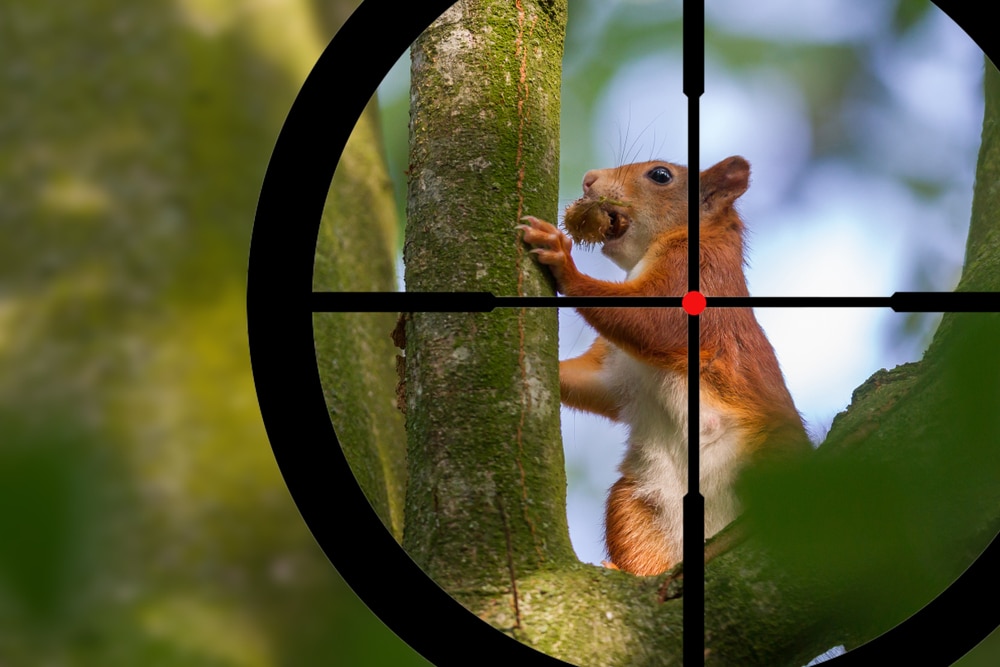Table of Contents
Have you ever noticed how squirrels always seem to be in a rush? They’re constantly darting around, always on the move! These little creatures are nature’s speedsters, scurrying up trees faster than you can say “acorn.” If you’ve ever wondered how to catch these quick critters on a squirrel hunt, you’re not alone. Picture the crisp morning air, the thrill of the chase, and the satisfaction of outsmarting one of nature’s fastest animals. Squirrel hunting isn’t just a sport; it’s a rite of passage for hunters of all experience levels. Despite their small size, squirrels present a big challenge and offer even bigger rewards. Whether you’re a seasoned hunter looking to hone your skills or a beginner eager for adventure, mastering squirrel hunting can lead to unforgettable outdoor experiences. In this guide, we’ll uncover the secrets to successful squirrel hunting. From selecting the right gear to understanding squirrel behavior, you’ll learn the essential tips and techniques to become a squirrel hunting expert. Get ready to embrace patience, precision, and sharp observation skills. Gear up and prepare for a legendary squirrel hunting experience.
Understanding Squirrel Behavior and Habitat
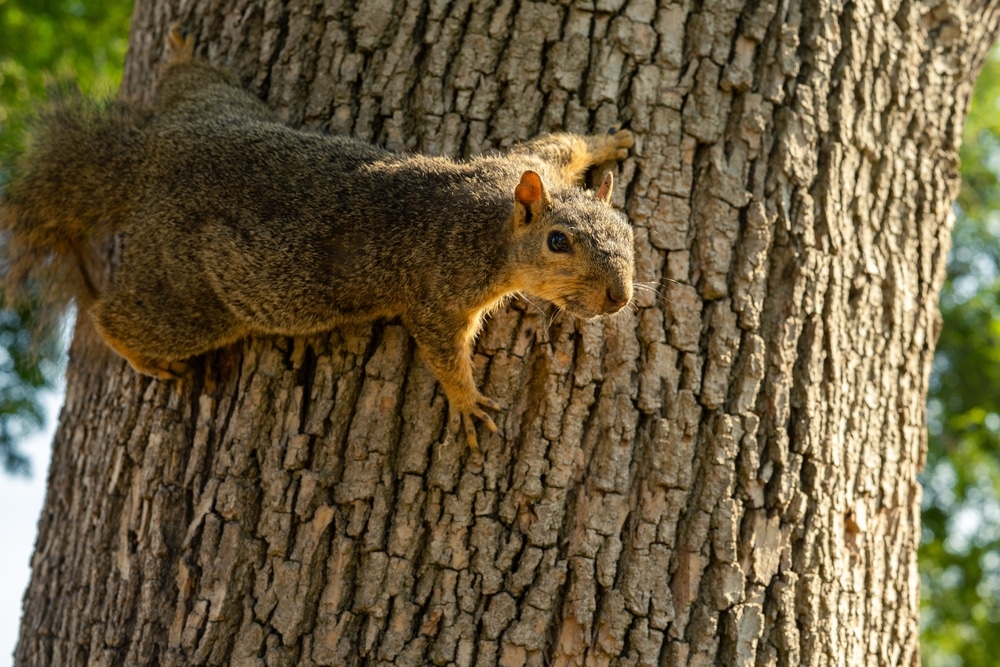
To be a successful squirrel hunter, it’s crucial to understand their habits and preferences:
Activity Patterns
- Morning and Evening: Squirrels are most active during the early hours after sunrise and late in the afternoon before sunset.
- Seasonal Changes: In autumn, they are highly active gathering food like nuts and acorns.
Preferred Habitat
-
- Squirrels thrive in hardwood forests with oak, hickory, walnut, and pecan trees.
- Look for trees with visible dreys (squirrel nests), typically located high in the branches.
Foraging Signs
-
- Chewed acorns, nutshells, and stripped tree bark indicate squirrel activity.
- Keep an eye out for trails or claw marks on trees.
Defense Mechanisms
-
- Squirrels are skittish and have excellent vision and hearing. Sudden movements or noises will easily alert them.
Squirrel Favourite Foods
- Hickory nuts are a favorite among squirrels, especially in the fall when these nuts are abundant. Focus your scouting efforts on areas with large hickory trees and look for signs of squirrels, such as chewed shells and stripped tree bark.
- Another essential food source for squirrels is white oak acorns. Its trees drop the acorns earlier in the season compared to other oak species, making them an important early food source. Look for white oak trees and check the ground for acorns and signs of squirrel activity.
Types of Squirrels Commonly Hunted
In North America, the two most common species of squirrels hunted are the gray and fox squirrels. Gray squirrels are smaller and more nimble, typically found in dense forests. Fox squirrels, on the other hand, are larger and prefer open woodlands and fields. Knowing the behavior and habitat preferences of these species can significantly improve your squirrel hunting success.
Gray Squirrels
-
- Medium-sized and agile, common in Eastern forests.
- Prefer dense woods with ample nut-bearing trees.
Fox Squirrels
-
- Larger and slower than gray squirrels, often found in the Midwest and South.
- Thrive in open woodlands and edges of forests.
Red Squirrels
-
- Small and highly territorial, often in coniferous forests.
- More aggressive and vocal than other species.
Ground Squirrels
-
- Live in burrows and are typically hunted in open fields and prairies.
Essential Gear for Squirrel Hunting
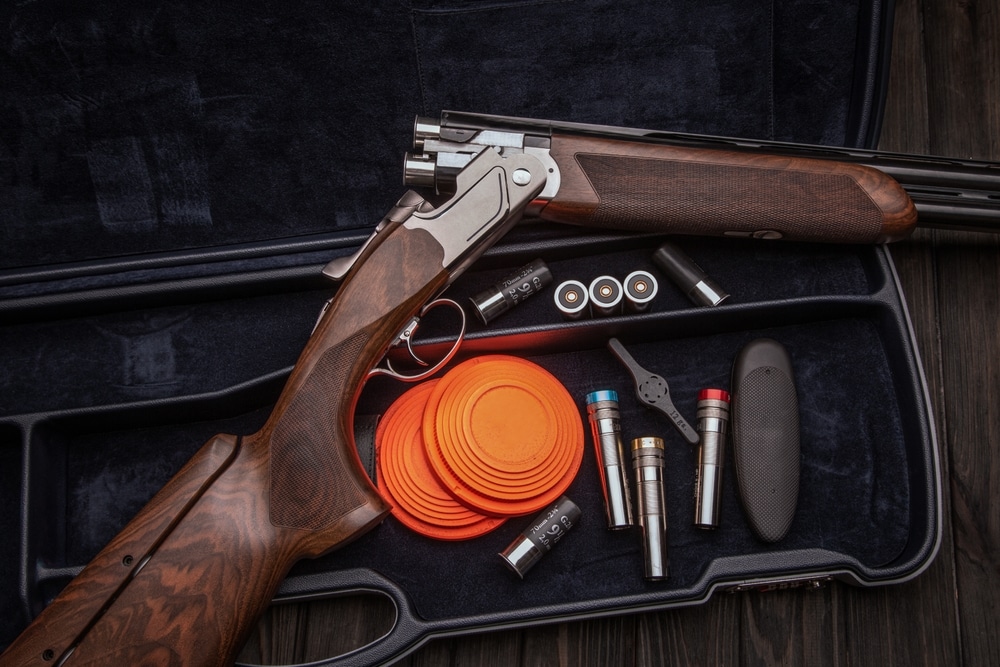
Firearms
-
- Rifles: A .22-caliber rifle is ideal for accuracy and minimizes damage to meat.
- Shotguns: A 20-gauge or 12-gauge shotgun is effective for moving targets, especially in dense forests. Use small shot sizes (#6 or #7.5).
Optics
-
- Binoculars: Spot squirrels from a distance, especially in tree canopies.
- Scopes: Improve accuracy on .22 rifles for long-range shots.
Clothing
-
- Camouflage: Helps you blend with the environment, reducing detection.
- Hunter Orange: Required in many areas to ensure visibility and safety during hunting seasons.
Accessories
-
- Backpack: To carry harvested squirrels, water, and other essentials.
- Knife: For cleaning and preparing the game.
- Squirrel Call: Mimics distress or chatter sounds, attracting squirrels.
Techniques for Squirrel Hunting
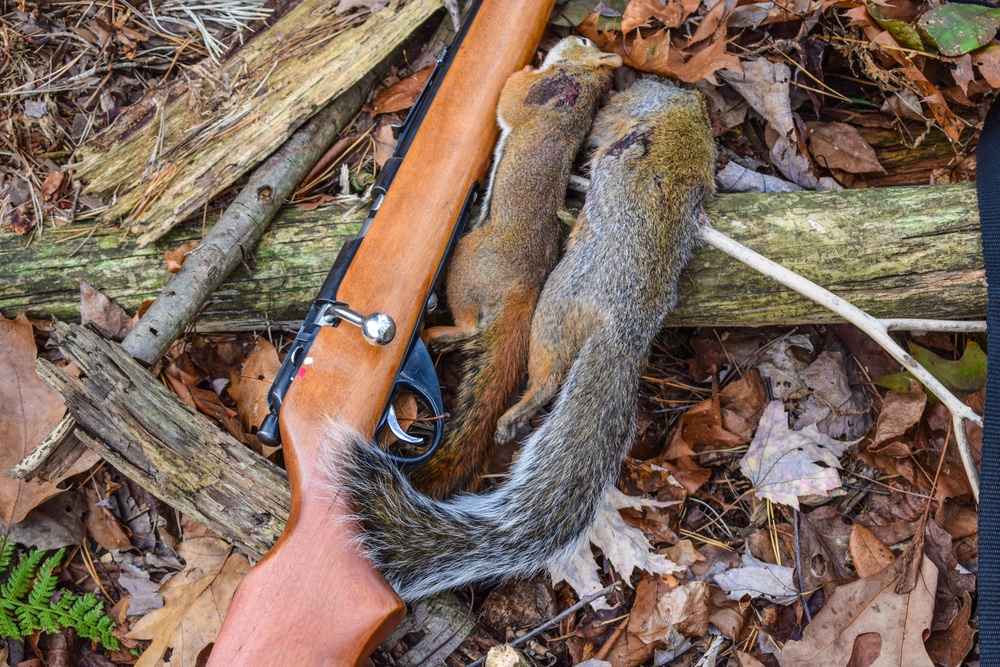
Still Hunting
- Move slowly and quietly through the woods.
- Pause frequently to listen for rustling leaves or barking sounds.
Stand Hunting
- Set up near a food source like an oak or hickory tree.
- Sit quietly and remain patient as squirrels emerge to forage.
Stalking
- When you spot a squirrel, use trees and natural cover to get closer.
- Take slow, deliberate steps to avoid startling your prey.
Calling
- Use a squirrel call to mimic a distressed or territorial squirrel.
- Wait for curious squirrels to approach, providing an opportunity to take a shot.
Spot and Shoot
- Scan tree canopies with binoculars for movement or silhouettes.
-
- Position yourself for a clean, ethical shot.
The Best Time to Squirrel Hunt
Timing is very important in squirrel hunting. The squirrel hunting season typically starts in early fall and can extend into winter. Check with your local wildlife agency for specific dates and regulations. Early in the season, squirrels are actively searching to build up their winter food stores, making it an excellent time to hunt.The best time to squirrel hunt is during the early morning and late afternoon when squirrels are most active. These periods are ideal for spotting squirrels as they forage for food. During these times, the light conditions are also favorable, allowing you to move more stealthily
- Early Fall: The best time to hunt squirrels. Food is plentiful, and their activity levels peak.
- Late Fall and Winter: As leaves fall, visibility improves, making it easier to spot squirrels.
- Summer: Young, less wary squirrels are abundant, though thick foliage can make hunting more challenging.
Hunting on Private Lands vs. Public Lands
Both private lands and public lands offer unique advantages for squirrel hunters. Private lands often have less hunting pressure and more consistent food sources, making them ideal for those who have access. Public lands, while more crowded, can also provide excellent hunting opportunities, especially in designated small-game hunting areas.
Private Lands
If you have access to private lands, you can enjoy several advantages for squirrel hunting. Private lands often have less hunting pressure, allowing squirrels to thrive. Establishing a good relationship with landowners can provide you with exclusive hunting rights. Always seek permission before hunting on private lands and respect the property and any rules set by the owner.
Public Lands
Public lands can offer great hunting opportunities, especially in areas managed for small game. These lands are accessible to all hunters but may have more competition. Research public hunting areas in your region and scout them thoroughly before the squirrel hunting season begins. Look for less crowded spots and focus on areas with abundant food sources.
Hunting Squirrels with Dogs
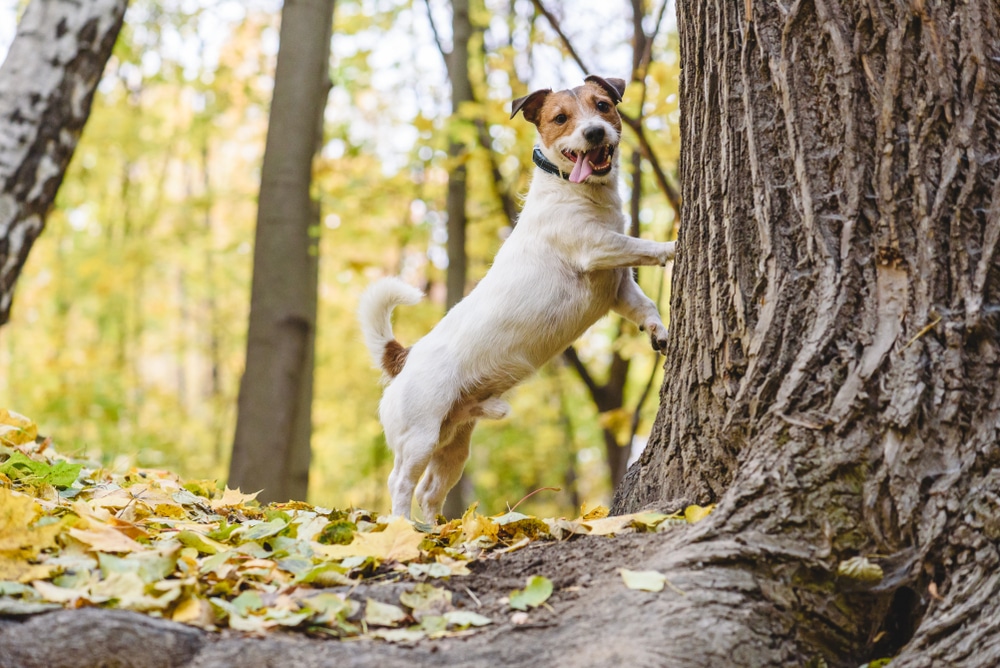
Using squirrel dogs can greatly enhance your hunting experience. Hunting squirrels with dogs involves training specific dog breeds to locate and tree squirrels. Squirrel dogs are trained to bark when they find a squirrel, alerting the hunter to its location. This method is especially effective in dense squirrel woods where visibility is limited.
Choosing the Right Dog Breeds
Not all dogs are suitable for hunting squirrels. Some of the best dog breeds for this type of hunting include:
Mountain Feist
Known for their agility and keen sense of smell, these dogs are excellent at locating squirrels.
Treeing Walker Coonhound
This breed is known for its treeing ability and loud bark, making it ideal for hunting with squirrel dogs.
Cur
These versatile dogs are highly trainable and have a strong hunting instinct.
Training a squirrel dog requires patience and consistency. Start by familiarizing your dog with the scent of squirrels and gradually introduce them to hunting scenarios. Take your dog out for regular training sessions in areas with high squirrel a
Hunting in Squirrel Woods
Squirrel woods are typically dense forests with a mix of hardwoods such as oak, hickory, and beech. These areas provide ample food sources for squirrels and are prime hunting grounds. When hunting in squirrel woods, move slowly and use the natural cover to your advantage. Look for signs of squirrel activity, such as chewed nuts and scratched bark.
Hunting Techniques in Squirrel Woods
Tree Stand Hunting: Setting up a tree stand can give you a better vantage point to spot squirrels in the treetops.
Ground Blind: Using a ground blind can help you stay hidden while waiting for squirrels to come to you.
Walk-and-Stop Method: Walk a few steps and then stop to listen and observe. This technique mimics natural movements and can help you spot squirrels.
Tips for a Successful Hunt
- Squirrels are easily spooked by noise and sudden movements. Approach your hunting area quietly and take slow, deliberate steps.
- Utilize trees, bushes, and other natural features to stay hidden while stalking squirrels.
- Scan the treetops and forest floor for any signs of movement. Squirrels are often spotted by the flicker of their tails or the rustling of leaves.
- Pay attention to the sounds of the woods. The chattering of squirrels and the sound of falling nuts can give away their location.
- Patience is key in squirrel hunting. Find a good spot with plenty of food sources and wait quietly. Squirrels will eventually come to you.
Conclusion
Mastering squirrel hunting requires a combination of knowledge, skill, and the right hunting gear. Understanding the behavior of gray and fox squirrels, choosing the best time to squirrel hunt, and employing effective hunting techniques are all essential for a successful hunt. Whether you prefer hunting squirrels with dogs or stalking them quietly through the woods, the thrill of the chase and the beauty of nature make squirrel hunting a rewarding experience. With these squirrel hunting tips, you’ll be well on your way to becoming a proficient squirrel hunter. Happy hunting!


